Fireworks can bring much excitement and joy to celebrations, but it is crucial to maintain a safety-first mindset when handling and firing them.
Today, we’re going to talk about the kind of space required for certain fireworks. We will start with the industry standard guidelines that most states and local municipalities have adopted as their own regulations.
NFPA Guidelines For Site Selection and Safety Distances
The National Fire Protection Association (NFPA) is a non-profit organization that aims to reduce the worldwide burden of fire hazards by providing and advocating for fire safety codes, standards, research, training, and education. The NFPA develops and publishes over 300 consensus codes and standards that are widely used and adopted by various organizations, including governments, fire departments, industries, and educational institutions.
The NFPA 1123 – Code for Fireworks Display is the gold standard by most for regulating fireworks displays. Be sure to check your local AHJ (e.g. fire department) and see what regulations apply to your shoot site as your jurisdiction may differ in its requirements.
NFPA – 1123, Chapter 5 – Display Site Selection is the chapter that applies to safety distances. It emphasizes the importance of maintaining a safe distance, as shooting aerial fireworks without adequate space can result in debris falling onto nearby buildings, properties, or even people, leading to potential hazards. This regulation aims to promote safety and prevent accidents or property damage caused by fireworks displays.
Section 5.1.3 – Minimum Site Size Requirements, Subsection 1 is generally the most important section for the novice shooter to learn. It states:
For aerial shells, the minimum required radius of the display site shall be 70 ft/in. (22 m/25 mm) of the internal mortar diameter of the largest aerial shell to be fired, as shown in Table 5.1.3.1.
NFPA 5.1.3.1
*Note that for comets and mines, this distance is cut in half (35 ft/in) (11 m/25 mm) according to section 5.1.3.2.
Given this regulation, to get the distance required to shoot a standard consumer canister shell from a DR11, 1.91” ID (inner diameter) mortar, we need to multiply that inner diameter by 70.
1.91 x 70 = 133.7
Rounding up to the nearest whole number, we need 134 feet from the point of discharge to comply with the regulation.
For a 2.4” (62mm) 1.4G Pro Line shell, we would need 168 feet from the point of discharge to comply with the regulation.
Note, the NFPA has strict policies about reproducing their content. They want to ensure the information is available online, but only on their website and when you purchase their standards materials. While I don’t agree with this policy for such important information, I will respect it. I have shared a small, relevant part for our simple needs but there is a lot of other information available as it relates to safety distances for angling mortars and when other hazards are nearby. If you need the full regulations, please visit the NFPA site here.
Some Related Aerial Shell Facts
I found this chart below (no idea who created it) that illustrates the estimated trajectory and height a shell will travel when angled at 75 degrees (also known as +15 degrees from center), based on its size. Keep in mind, this graphic is for illustrative purposes and isn’t exactly perfectly scaled.
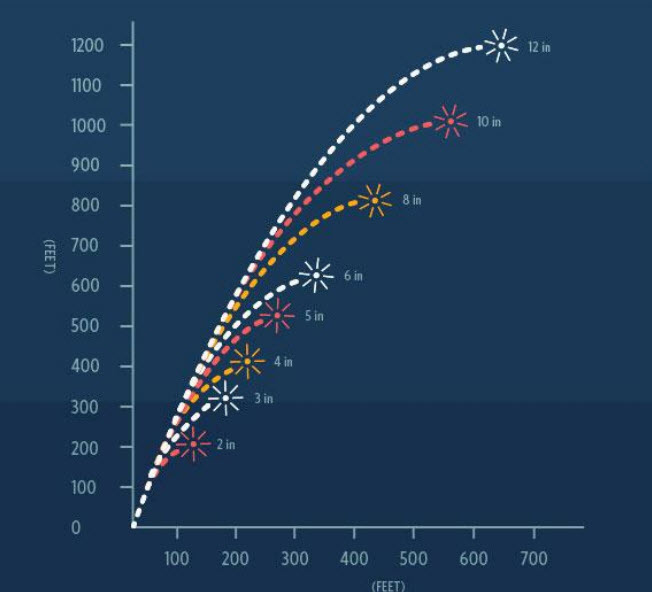
And the graphic below shows how wide a shell will burst. This information is an important first step to visualize your “Fallout Zone”. The rule of thumb here is that a shell will burst 45 feet in diameter for every inch in shell size. This means a 2 inch shell will burst about 90 feet in width. That DOES NOT mean that is the safe distance for spectators, however. That’s an important distinction that I personally didn’t understand when I first found these graphics. It can be misleading. These are just giving general information on average height/width, etc… The problem is, they do not take into account where the debris and embers continue. If you’ve seen a “willow” shell hang for a while, you will notice it’s bigger than the below because you can see all of the burning stars for longer on their journey back to earth. This, coupled with the effects of wind, is certainly why the NFPA regulations have a safe distance radius of at least 15% more than the actual firework burst.
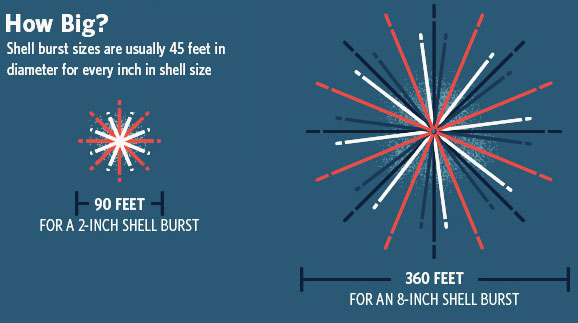
Hopefully this information helps make sense of the distances required for aerial fireworks. To learn more, check out some of the resource links below and be sure to follow us on Facebook, Twitter, and YouTube to get updates when new content is available. This is just one of many safety articles to come.
Keep learning!
– The Novice Pyro
More Fireworks Safety Resources
This list will be updated regularly.


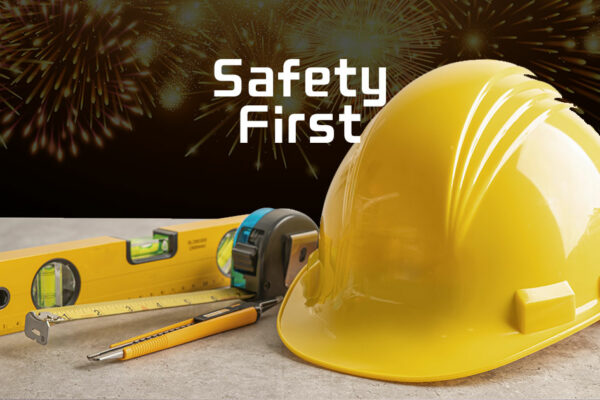

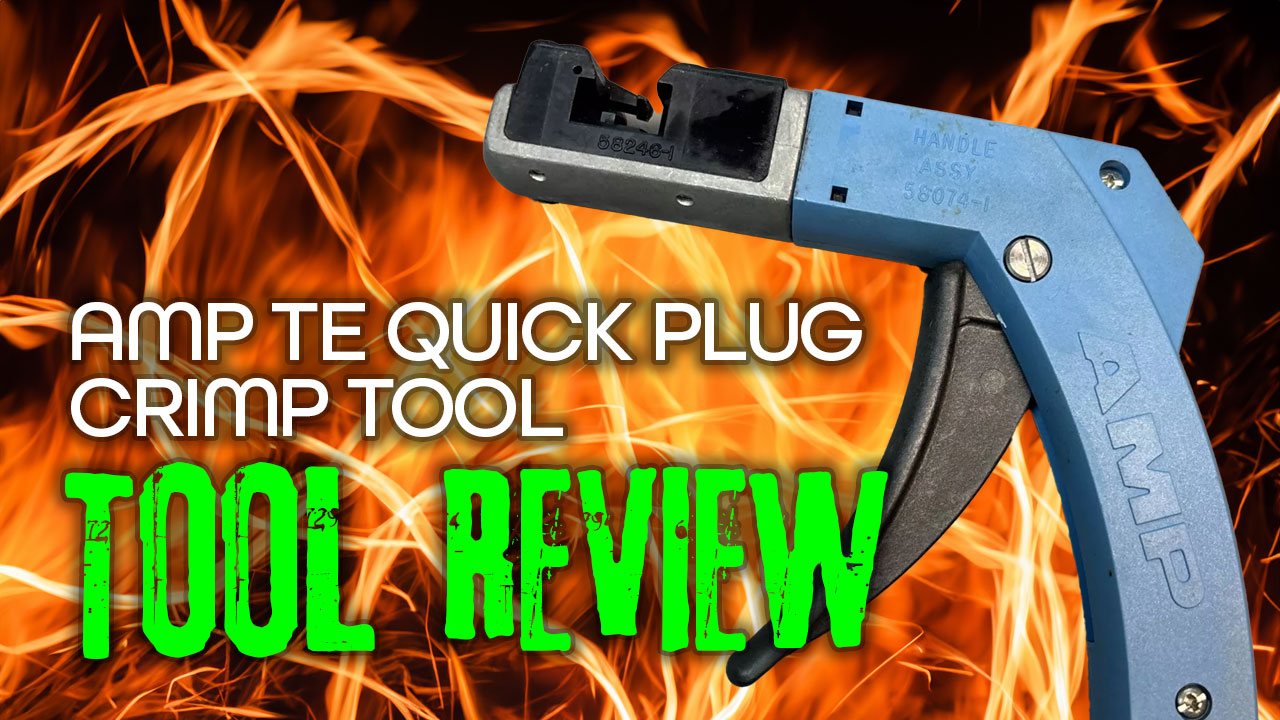

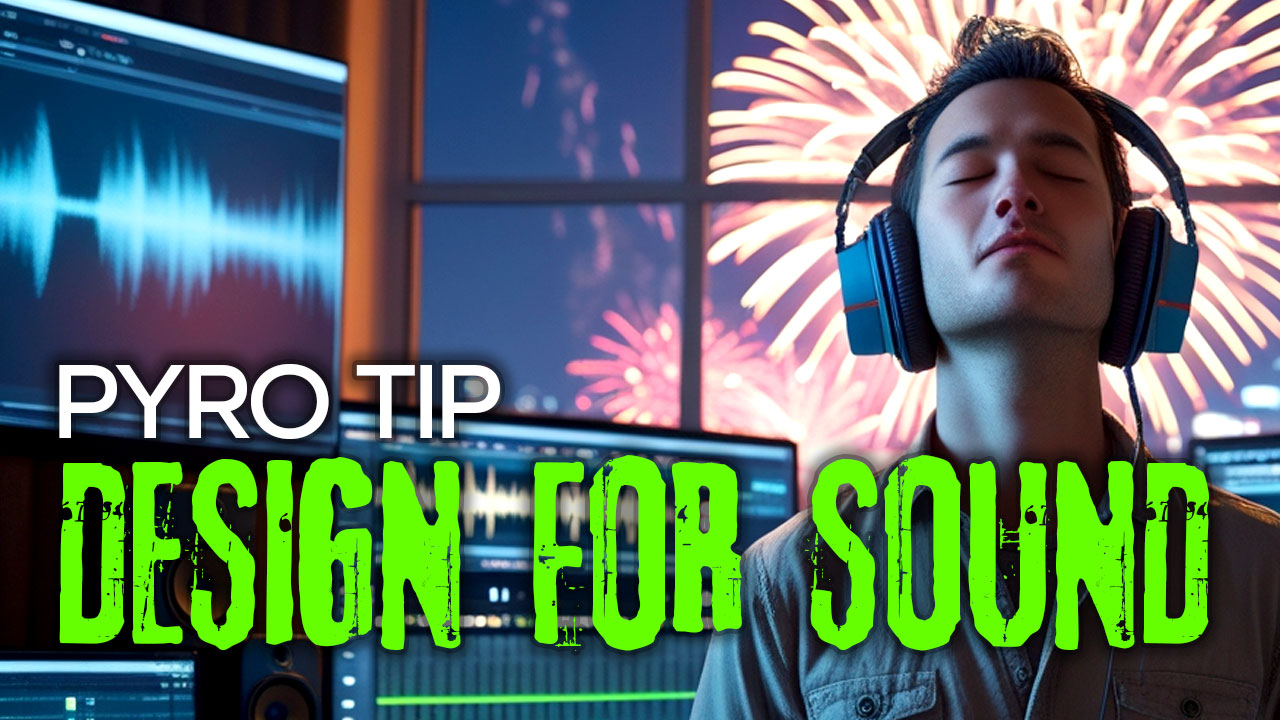

Leave a Comment
You must be logged in to post a comment.